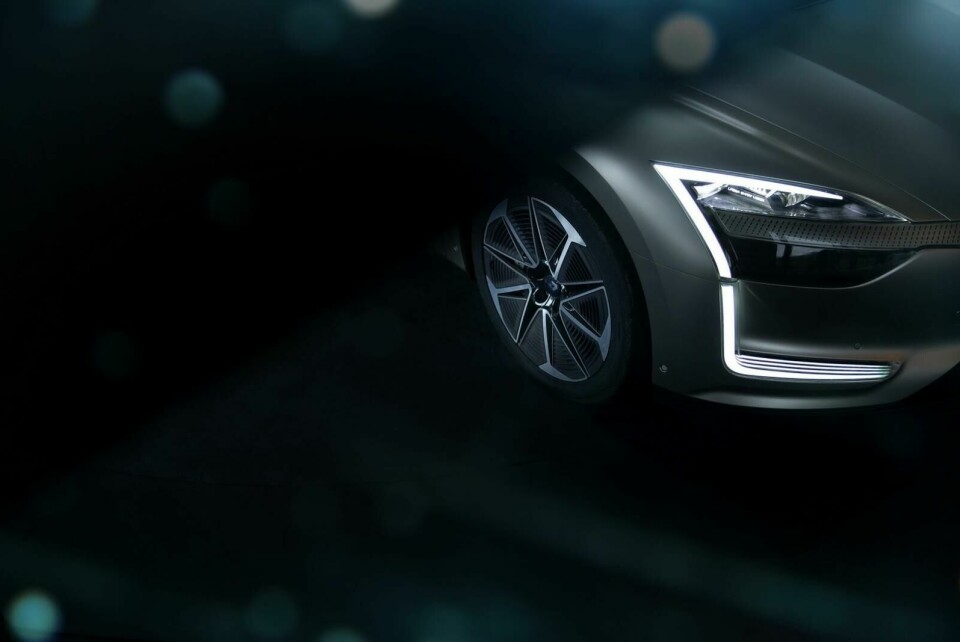
Renault Symbioz concept enters Phase 2
Just three months later, Renault’s autonomous connected car concept looks a much more serious production contender
Renault has updated its Symbioz concept, first seen at the Frankfurt Motor Show driving in and out of its own house, by building what it is calling a ‘demonstration car’. Unlike the original, the Symbioz 2 is not just a running prototype, but a road-legal test car currently being used for demonstration runs in France.
Significantly, the car has been driving itself on these demo runs. What’s more, while the first Symbioz was pitched as a vision for 2030, this phase two version exists, says Renault, “to give us a more near-term experience to 2023.” It looks tellingly realistic inside and out.

The Symbioz is the first Renault developed from the ground up to be autonomous, specifically with Level 4 autonomy capabilities.
While the current drive assist systems coming from the likes of Tesla, Nissan and Mercedes-Benz are considered Level 2 autonomy – wherein the driver must be alert, paying attention and holding the wheel with at least one hand, ready to take over at any time – Level 4 allows for “mind-off” driving, in which the occupant behind the wheel can sit back and be a pure passenger in most, but not all, real-world conditions (the car will come to a controlled stop if it cannot decide how to handle a situation ahead, at which point a human must take over).

It therefore represents a significant step forwards, especially if we are to believe that this car could be for sale in five years’ time.
It certainly looks believable; gone is the minimalist glass roof with elaborate split half-gullwing doors, replaced by conventional, blacked-out pillars and a proper roof structure (still with a panoramic sunroof). The overhangs are longer too, most likely to help accommodate crash structures.

Longer, narrower and taller than the original with matured exterior design cues, the sequel also has a comparatively conventional cabin, with two pairs of less elaborate seats which all point forwards instead of swivelling to face each other like most concept AVs.
There’s a less spaceship-like steering wheel, too, with a squared-off rim similar to that of LaFerrari. Or an Austin Allegro.

That said, while it feels watered-down compared to a pure concept, it does start to seem highly advanced when instead compared to production cars.
The seats respond to each of the three driving modes. In ‘Classic’ (regular human driving) they’re like any seat you’d find in a sedan, while in ‘Dynamic’ (sporty human driving) the bolsters tighten to hold the occupants in place.

Kids too annoying? Ignore them and watch a VR video instead
In the autonomous ‘AD’ mode, the seats can be separately made to recline, sprout armrests and rotate by up to ten degrees towards the centreline of the car, allowing passengers to relax and socialise.
These three modes also come with their own ambient lighting colours (Classic = white, Dynamic = red, AD = gold) and their own fragrance mixture, with differing combinations of ginger, cedar, birch and vetiver among other things, to help you find the right mood.

The sound system is provided by Devialet (not to be confused with the UK vehicle licencing authority) and features speakers embedded in the pillars, dashboard and between the rear seats for some acoustic cleverness using “revolutionary wave guides.” Ooh.

Finally, entering AD mode causes the steering wheel and L-shaped trio of OLED infotainment screens to retract 120mm towards the dash, freeing up more space. The large, square-bracket front daytime running lights turn blue in this mode, to signify that no humans are in control.

Unlike the original concept, there is no rear visibility at all, as a wall of curved wood panels winds between the rear seats and up to the roof. Instead, a rear-view camera hidden in the tailgate badge sends images to a screen inside the interior ‘mirror’.
The door mirrors have also been replaced by cameras, with mirror-sized screens just inside of where one would normally look. If that’s not enough digitalised visual information, there’s a head-up display as well.

This second Symbioz is just as much a ‘connected car’ as the first, as it recognises occupants by their phones and can adjust seat and HVAC settings accordingly. It can also be used to monitor and send commands to the associated smart house – which hasn’t been made larger or less bronze to reflect the new car – while V2X connectivity keeps the car aware of prevailing traffic conditions and nearby tourist attractions.

So, how seriously should we take this car? Does it look production-ready for a serious reason? Will it turn out to be a red herring?
Packaging all this technology together will certainly make for an expensive car – it would have to be Renault’s flagship model, likely beyond their usual price range – although in theory a subscription or shared-car service could take the financial edge off for customers, if indeed it comes to that.

At the very least, it’s a sign of how hard car manufacturers are pushing to make autonomy a reality in the near future. Let’s see where it goes…




